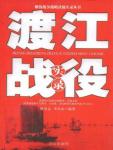Chapter 1 sequence
As we celebrate the 80th anniversary of the birth of the Chinese People's Liberation Army, and today we need to continue to inherit the glorious revolutionary tradition and carry forward the spirit of patriotism and revolutionary heroism, we cannot help but look back at the most representative figures in the People's Liberation War that have contributed to China's historical destiny and future. Strategic battles of decisive significance such as Liaoshen, Huaihai, Pingjin, and crossing the river.
These major battles not only shocked the whole of China and the whole world at that time, but also the shocking war scenes and the heroic spirit of swallowing mountains and rivers are undoubtedly still rare teaching materials and great inspiration for people today. and educational significance.
The brief situation of the battle of crossing the river is: after the three major battles of Liaoshen, Huaihai, and Pingjin, the People's Liberation Army's millions of troops approached the Yangtze River. On April 20, 1949, the Kuomintang government refused to sign the peace agreement.Following the orders of Chairman Mao Zedong and Commander-in-Chief Zhu De to march across the country, the People's Liberation Army launched an unprecedented cross-river operation. At 20:00 on the evening of April 20, the Second and Third Field Armies of the People's Liberation Army and local armed forces, with the support of the masses, launched three assaults in the east, middle and west on the thousands-mile-long front from Hukou in the west to Jiangyin in the east. The group launched the Battle of Crossing the River.Under the command of Tan Zhenlin, 350,000 people from the Central Assault Group first broke through the line of defense between Anqing and Wuhu; implement a breakthrough. On the 22nd, the Kuomintang army began to retreat across the board. On the 23rd, Nanjing was liberated by the People's Liberation Army, and the reactionary rule of the Kuomintang came to an end.Then, the various armies of the People's Liberation Army marched victoriously to the south of the Yangtze River, liberated Hangzhou on May 3, liberated Nanchang on May 22, and liberated Shanghai on May 27.During this period, the advance corps of the Fourth Field Army forcibly crossed the Yangtze River from Tuanfeng to Wuxue in Hubei on May 14, liberated Hankou on the 16th, Wuchang and Hanyang on the 17th, and won an uprising of 20,000 people from the 19th Corps of the Kuomintang Army. .The Battle of Crossing the River lasted 42 days. The People's Liberation Army wiped out more than 430,000 enemies, liberated the vast areas of southern Jiangsu, southern Anhui, and Zhejiang, and parts of the three provinces of Jiangxi, Hubei, and Fujian. Base.
This strategic decisive battle has been going on for nearly 60 years, and people basically understand the above-mentioned general situation, but they may not be completely clear about those important details and little-known historical materials, such as: How did Mao Zedong not allow The history of the "Northern and Southern Dynasties" is repeating itself. Is Li Zongren and Chiang Kai-shek's "seeking peace" true or false? Has Stalin discouraged the CCP's plan to cross the Yangtze River? In Shanghai, what happened to the "Amethyst" incident, and why the Kuomintang troops guarding the river were defeated like a mountain...
These details and inside stories may be more meaningful for people to understand the ins and outs of this battle in more detail, to be familiar with the superb wisdom, strategy and command art of our army commander, and to perceive the heroic and tenacious fighting spirit of the People's Liberation Army.Therefore, this book takes the name as its name, chooses some viewpoints that people may not be familiar with, and makes a comprehensive and detailed description.
This book focuses on explaining the struggle strategies of the Chinese Communist Party and the two parties in this battle, the decision-making of the campaign, the deployment of generals and troops, especially some details of how the Kuomintang army failed and how the People's Liberation Army won.Of course, it is not about describing some internal secrets that cannot be made public.
The narration of history must respect history, and there must be no falsehood or arbitrariness.Although this book adopts the style of documentary literature, it is based on authoritative historical materials, and the plots and facts are well-founded.To this end, we refer to a large number of relevant military history, war history materials and treatises.Here, we would like to express our heartfelt thanks to the authors of these historical materials (attached).

